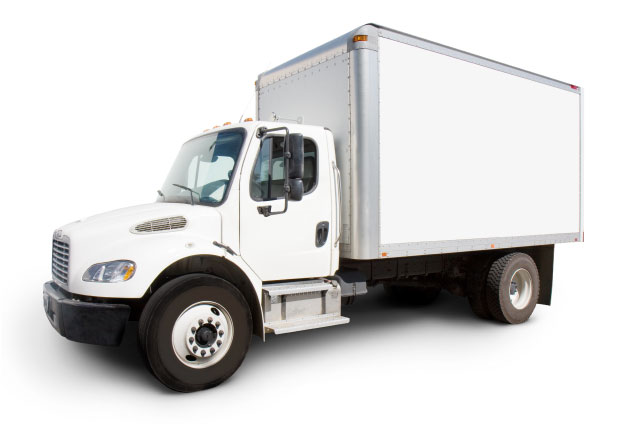Store Your Sofa with Confidence: Expert Guidelines
Posted on 18/05/2025
Store Your Sofa with Confidence: Expert Guidelines
Are you planning a move, renovating your home, or simply looking to maximize your living space? Knowing how to store your sofa with confidence can save you from costly mistakes such as fabric damage, mold growth, or an ill-fitting sofa upon retrieval. Sofas are significant investments, often becoming the centerpiece of living rooms and cherished for years. That's why proper storage is more than just an afterthought--it's essential for maintaining your furniture's value, comfort, and appearance.
Why Proper Sofa Storage Matters
Most sofas are constructed with a combination of fragile fabric, sensitive cushioning, and intricate frameworks. When improperly stored, materials can degrade, wood can warp, and upholstery may collect dust, odor, or worse--mold. Whether you're storing your sofa short-term or long-term, adhering to expert sofa storage guidelines ensures your couch emerges unscathed and ready for relaxation.
- Preserves upholstery - Proper storage shields fabric and leather from dust, fading, and stains.
- Prevents structural damage - Ensuring correct placement avoids frame bending or sagging.
- Guards against pests and mold - Moisture and pests can be disastrous for stored furniture; protection is key.
- Saves money - Avoid repair and replacement costs by storing correctly from the start.

Expert Guidelines to Store Your Sofa With Confidence
1. Thoroughly Clean and Prepare Your Sofa
Before you even think about moving your sofa to storage, clean it thoroughly. Dust, crumbs, and stains left on the sofa can set in or attract pests over time. Here's how to make sure your sofa is storage-ready:
- Vacuum all surfaces, including under the cushions, to remove dirt and debris.
- Spot clean stains according to the manufacturer's instructions, using gentle cleaners suitable for your sofa's fabric or leather.
- For leather sofas, condition the leather to prevent drying and cracking during storage.
- Allow your sofa to completely dry before wrapping or putting into storage to avoid mold or mildew.
2. Disassemble Where Possible
Disassembling your sofa makes transportation easier and reduces the risk of damage. Many modern couches are designed for this:
- Remove sofa legs, cushions, and detach any armrests or modular sections.
- Keep hardware in clearly labeled bags and attach them securely to the main frame for easy reassembly.
- Photograph each step of the process for reference when reassembling your sofa later.
3. Choose the Right Storage Unit
Picking the right storage unit is crucial for ensuring your sofa's safety during the storage period. Here's what you need to consider:
- Climate-controlled units are highly recommended, especially for leather or antique sofas, to regulate temperature and humidity.
- Pick a unit that's large enough to store your sofa without having to force or wedge it into place, which can cause warping or fabric stretching.
- Avoid placing your sofa directly on the unit floor--use pallets or risers to provide airflow and protect from potential water damage.
4. Protect Your Sofa During Storage
The right protection makes all the difference. Prevent dust, moisture, and physical damage by following these tips:
- Wrap your sofa in breathable materials such as cotton sheets or moving blankets. Avoid plastic wraps, as they can trap moisture and lead to mold or mildew.
- If you must use plastic for short-term protection during the move, remove it as soon as possible when the sofa is in the storage unit.
- Pay extra attention to fragile areas--cover and cushion sharp corners and delicate legs to prevent scratches or dents.
5. Store Your Sofa Vertically or Horizontally?
It's always best to store your sofa horizontally for extended periods. Storing vertically may seem like a space saver, but it puts stress on the sofa's structure, especially the arms and frame, which can bend or sag. Instead, clear an appropriate spot in your storage unit, place your sofa flat and ensure nothing heavy is stacked on top of it.
6. Allow for Airflow
Don't forget about ventilation. Good airflow prevents moisture build-up, reducing the likelihood of mold or musty odors. To promote circulation:
- Leave a small gap between your sofa and the storage unit wall.
- Place it off the ground using pallets or risers.
- Avoid wrapping tightly with non-breathable materials.
7. Arrange Storage Space Wisely
Effective placement within your storage unit is as important as selecting the right unit. Maximize both protection and retrieval convenience by:
- Positioning the sofa in a spot safe from leaks or drafts--avoid near doors, vents, or unit edges prone to temperature variation.
- Storing the sofa horizontally, ideally along a wall, and ensuring it is not underneath or supporting stacks of boxes or other heavy items.
- Leave an access path so you can check on your sofa periodically without having to move everything around.
8. Inspect and Maintain During Storage
If you'll be storing your couch for months or more, plan to visit your storage unit every few months. Look for:
- Signs of moisture--check for condensation, dampness on the floor, or a musty smell.
- Evidence of pests, such as droppings or chewed fabric.
- Condition of your sofa's wrap--replace any dusty or torn coverings as needed.
- Consider putting moisture absorbers or desiccant packs nearby to further protect against dampness.
Special Considerations for Different Sofa Types
Not all sofas are created equal--your storage approach may vary based on the material and construction.
Fabric Sofas:
- Extra care with pre-cleaning--avoid food residue and stains.
- Use only breathable covers; plastic can lock in moisture and trigger mold.
Leather Sofas:
- Condition the leather before storing to keep it supple.
- Never wrap leather in plastic; opt for light cotton covers.
- Climate control is highly recommended due to leather's sensitivity to heat and humidity fluctuations.
Antique or High-Value Sofas:
- Consider professional storage or climate-controlled vaults.
- Document the sofa's condition with photos for insurance purposes.
Frequently Asked Questions on Storing Sofas Safely
What's the minimum storage unit size I need for a sofa?
A typical three-seat couch will often fit in a 10x10 foot unit, but always check your sofa dimensions and unit specifications first.
Can I store my sofa in a garage or shed?
Storing a sofa in a non-climate-controlled garage or shed risks exposure to extreme temperatures, moisture, and pests. Dedicated storage units are safer for your furniture's longevity.
Should I use furniture polish or protectant before storage?
For wooden accents, apply appropriate wood polish to protect against drying or cracking. For upholstery or leather, use manufacturer-recommended conditioners or protectants before wrapping and storing.
What's the best way to prevent mold and mildew?
- Store only when the sofa is completely dry.
- Use desiccants or moisture absorbers inside the unit.
- Opt for climate-controlled storage and avoid plastic wrappings.
Top Mistakes to Avoid When Storing Your Sofa
- Storing while damp: Even slight moisture can turn into a mold disaster over time.
- Using sealed plastic wraps: Traps moisture, doesn't allow the sofa to breathe.
- Placing heavy items on the sofa: Causes indentations and can warp the frame.
- Ignoring regular inspections: Problems caught early are much easier to fix.
- Choosing a small unit: Cramped quarters can bend or damage your sofa.

Simple Checklist: Store Your Sofa with Confidence
- Clean and dry your sofa completely.
- Disassemble and pack parts carefully, labeling hardware.
- Wrap in breathable materials.
- Choose a spacious, climate-controlled storage unit.
- Elevate the sofa off the floor to ensure airflow.
- Visit and inspect periodically for sustained protection.
Conclusion: Make Your Sofa's Stay in Storage Stress-Free
Storing your sofa with confidence means taking proactive measures to maintain its quality over time. By following these expert guidelines and tips, you keep your valuable furniture safe from damage, pests, and the elements. Whether you're storing for a month or a year, your sofa will stay in excellent condition--and ready for comfortable use--as soon as you bring it home. Don't let improper storage cut short the life of your couch; choose the right storage solutions and methods today for peace of mind tomorrow!
Remember: When it comes time to retrieve your stored sofa, give it a thorough inspection and cleaning before setting it up. With these storage techniques, you can store your sofa with confidence every time.





